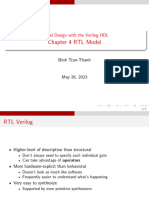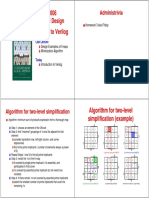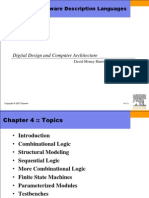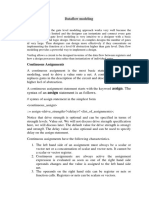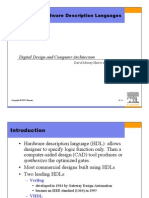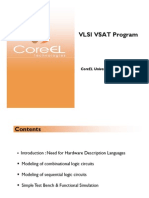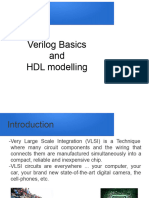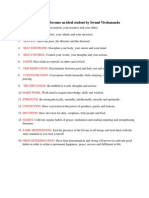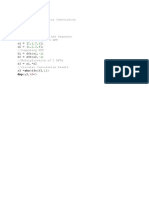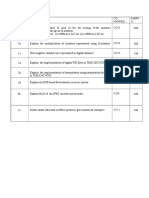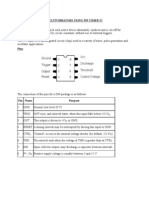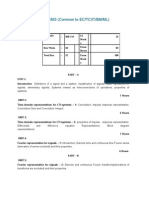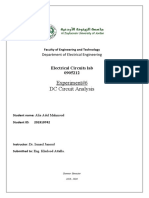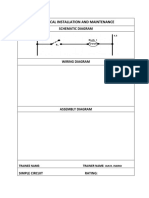0% found this document useful (0 votes)
190 views64 pagesVerilog HDL Overview & Syntax Guide
This document describes Verilog syntax and features. Key points include:
- Verilog was developed in 1984 and became an IEEE standard in 1995 for logic simulation and synthesis.
- Verilog is case sensitive and uses semicolons as line terminators. It supports concurrent execution, different data types like reg, wire, integer, real and vectors.
- The document describes Verilog syntax including modules, ports, always blocks, if/else statements, case statements, parameters and various operators.
- Description styles in Verilog include data flow, behavioral, gate-level and switch-level descriptions. Examples of half-adder, full-adder, mux and flip-flop modules are shown in
Uploaded by
sureshfm1Copyright
© © All Rights Reserved
We take content rights seriously. If you suspect this is your content, claim it here.
Available Formats
Download as DOCX, PDF, TXT or read online on Scribd
0% found this document useful (0 votes)
190 views64 pagesVerilog HDL Overview & Syntax Guide
This document describes Verilog syntax and features. Key points include:
- Verilog was developed in 1984 and became an IEEE standard in 1995 for logic simulation and synthesis.
- Verilog is case sensitive and uses semicolons as line terminators. It supports concurrent execution, different data types like reg, wire, integer, real and vectors.
- The document describes Verilog syntax including modules, ports, always blocks, if/else statements, case statements, parameters and various operators.
- Description styles in Verilog include data flow, behavioral, gate-level and switch-level descriptions. Examples of half-adder, full-adder, mux and flip-flop modules are shown in
Uploaded by
sureshfm1Copyright
© © All Rights Reserved
We take content rights seriously. If you suspect this is your content, claim it here.
Available Formats
Download as DOCX, PDF, TXT or read online on Scribd
/ 64













